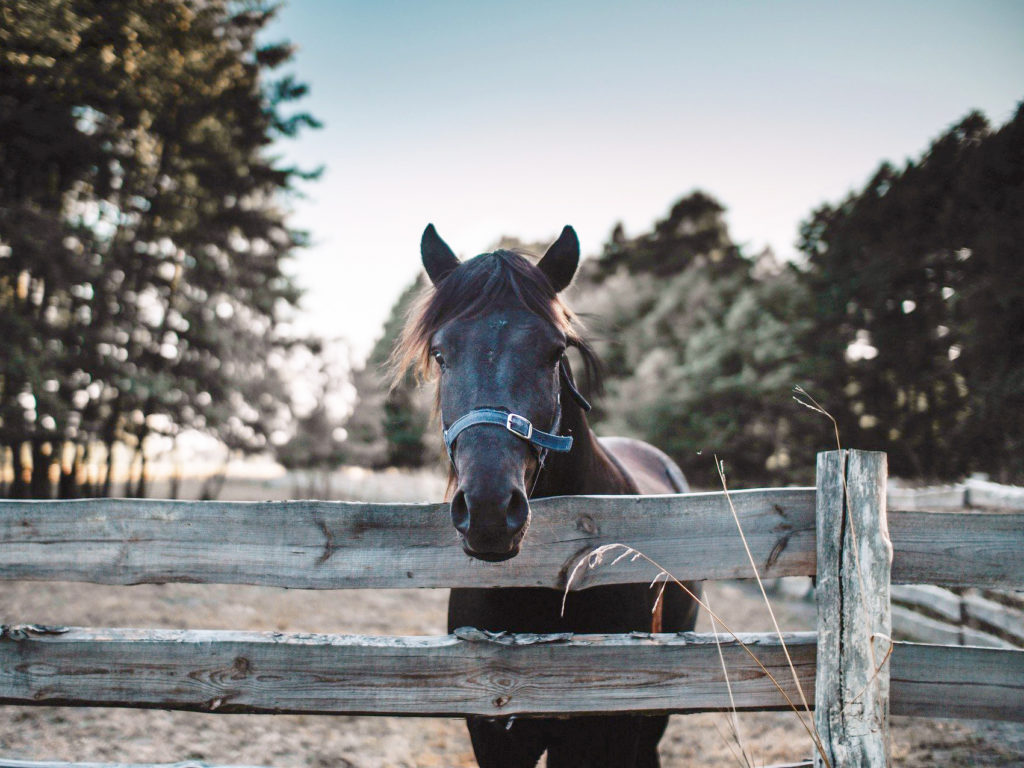Taking A Raincheck On Equine Rain Rot

While rain and drizzle can be good for crops and counting sheep at night, wet weather is also suitable for two less desirable things—fungi and bacteria. The spread of either type of organism can leave horses susceptible to developing rotten skin conditions, the most rotten and prevalent being rain rot.
As in the calm before the storm, if rain rot symptoms are overlooked, bacteria can penetrate the horse’s skin layer and contaminate it, triggering additional, more painful problems, such as mud fever and even cellulitis.
Fortunately, Dr. Leslie Easterwood, a clinical assistant professor in equine medicine at the Texas A&M College of Veterinary Medicine & Biomedical Sciences, says rain rot can be easily treated and prevented with the proper care.
“Rain rot is the common term for a crusting skin condition caused by the gram-positive bacterial organism Dermatophilus congolensis,” Easterwood explained. “This bacterial organism is a normal inhabitant of the skin but may invade the skin when the skin’s normal defenses are compromised.”
Under wet conditions, especially in rainy weather, the outermost layer of a horse’s skin can quickly break down, resulting in cuts and abrasions. Combined with humid conditions, the moisture accumulated by continuous rain and drizzle can foster mold and bacteria growth on a horse’s coat.
Even though the bacteria causing rain rot is primarily dormant under the right (or, in this case, wet) conditions, it can cause an inflammatory response that goes far beyond skin-deep.
“A compromised immune system, pre-existing conditions, and chronic wet weather can predispose a horse to be affected by dermatophilus,” Easterwood said.
Rain rot is usually found on horses’ backs but can manifest in many other areas of their bodies, including their rump, face, and legs.
“Rain rot is characterized by thick crusts that cause a ‘bumpy’ feel to the skin. The hair will come off in clumps attached to the crusts, leaving patches of hair loss,” Easterwood said.
Even though these symptoms sound grim, this bacterial disease is easily treatable, especially when caught early. According to Easterwood, most mild-to-moderate cases can be resolved in two to three weeks.
“Mild cases can be resolved with topical medicated shampoos to kill the bacteria and help loosen the crusts,” she said. “Severe cases will respond to systemic doses of antibiotics, with penicillin being the antibiotic of choice.”
Under cold and wet conditions, precautions are especially imperative.
For instance, while blankets are of great warmth and comfort for your favorite equine companion, a blanket can also create a hot, cozy environment for D. congolensis to germinate, so owners should thoroughly clean and dry all of your horse’s bedding, along with all grooming tools.
Besides regular grooming and paying particular attention to blanketing, Easterwood explained that avoiding prolonged wetness of the skin and having a barn or protection from the weather can be additional help.
Rain rot can be intimidating to deal with, but with proper preventative measures and regular grooming, owners can help their horses stay healthy and prancing, come rain or shine.
Pet Talk is a service of the College of Veterinary Medicine & Biomedical Sciences, Texas A&M University. Stories can be viewed on the web at vetmed.tamu.edu/news/pet-talk. Suggestions for future topics may be directed to vmbs-editor@tamu.edu.


